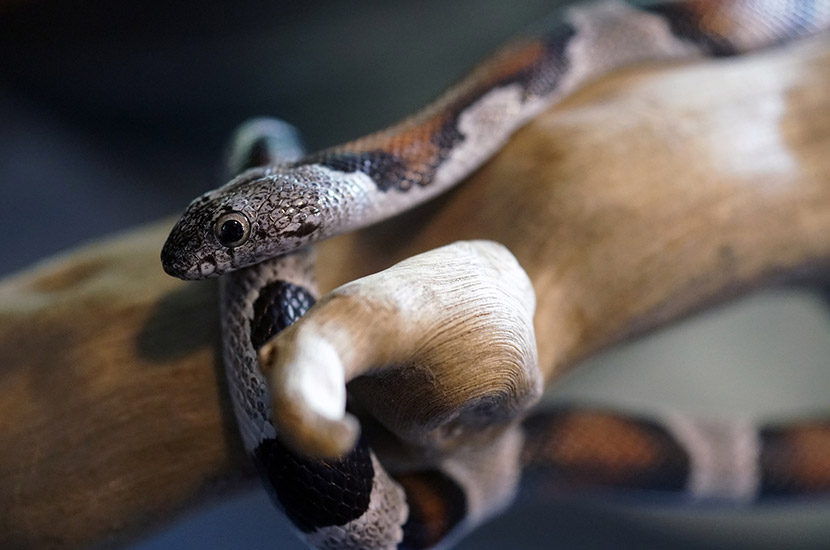Paul Gibbons, DVM ABVP Avian and Reptile
One of the most important aspects of reptile care is temperature maintenance. Although reptiles are commonly thought to be “cold blooded”, a study of iguanas in the South American rain forest found that daily body temperatures often exceed 100 degrees. These lizards climb trees to bask in the heat of the sun and warm their bodies. Every reptile species, however, encounters a unique temperature gradient in nature. For proper health in captivity, that gradient must be artificially simulated. Start by learning the specific needs of a species by purchasing books from the pet store, searching the Internet, or consulting with a reptile professional. Then, get at least two accurate thermometers to measure your environmental temperature gradient. Finally, set up a system that supplies the proper heat for your conditions.
Many options are now available to provide heat for reptiles. No single device is perfect, and I recommend different ones in different situations. Use one of the thermometers to monitor the coolest part of the enclosure. A primary heat source should heat the whole enclosure to the lower end of the species preferred range. Then, if needed, a secondary heat source may be used to raise the temperature of the basking spot. Use thermostats to regulate each heating source.
Primary heating devices include heat tape, under-the-tank mats, incandescent bulbs, ceramic heat emitters, flood lamps, and space heaters. These heat sources can be dangerous if used incorrectly, and the manufacturer’s recommendations must be followed. For example, light bulbs larger than 60 watts require a porcelain based fixture. Similarly, under-tank-heaters cannot be placed inside the tank, or they will cause severe burns. For extremely large enclosures such as closets, rooms, and greenhouses, radiant or forced air space heaters may be needed. If the heater uses gas, it is essential to monitor carbon monoxide levels. Rock heaters (“hot rocks” or “sizzle stones”) are not appropriate for use inside reptile enclosures. These devices do not adequately heat the air around them, and frequently inflict severe burns in the animals they were keeping warm.
Heating the entire enclosure may be difficult unless the whole room is warm enough. Often, a heat source is rated by how many degrees it can heat the enclosure above ambient temperature. The primary heat source must respond to changes that occur in the home with varying seasons. A change in the wattage of a bulb, use of a rheostat, or incorporation of a thermostat may be necessary to maintain the low end of a reptile’s safe range.
A secondary heat source might be needed to provide the upper end of the temperature gradient. The basking site provides heat necessary to activate digestive enzymes and stimulate the immune system. Most herpetoculturists use some type of overhead system, imitating the sun. Use the second thermometer at this site to ensure adequate and safe temperatures.
Timers are useful to regulate the secondary heat source. If an incandescent bulb that emits bright light is used, the timer allows shutoff for darkness. A basking spot may not be necessary at night for some species, since in the wild, temperatures can drop dramatically after sundown. However, if secondary heat is still needed during darkness, a blue, red, or ceramic bulb may be used.
Every setup is different, so the devices used to provide heat will vary according to the size of the enclosure, the species of animal, and the ambient room temperature. Be prepared to fine-tune your system as the seasons change. Constant monitoring is needed to ensure that the heat sources are providing your reptile with its preferred optimum temperature gradient.
If you have any questions, please feel free to call us at (502) 241-4117.

